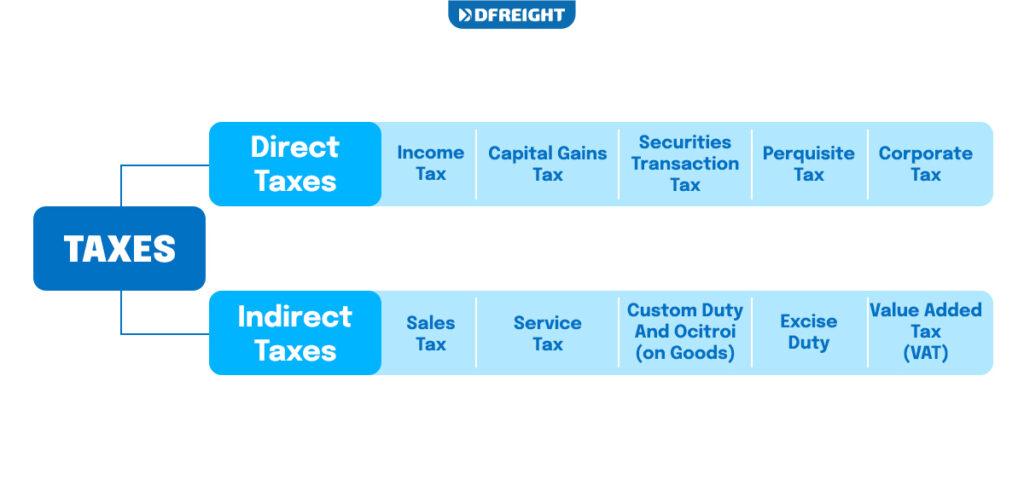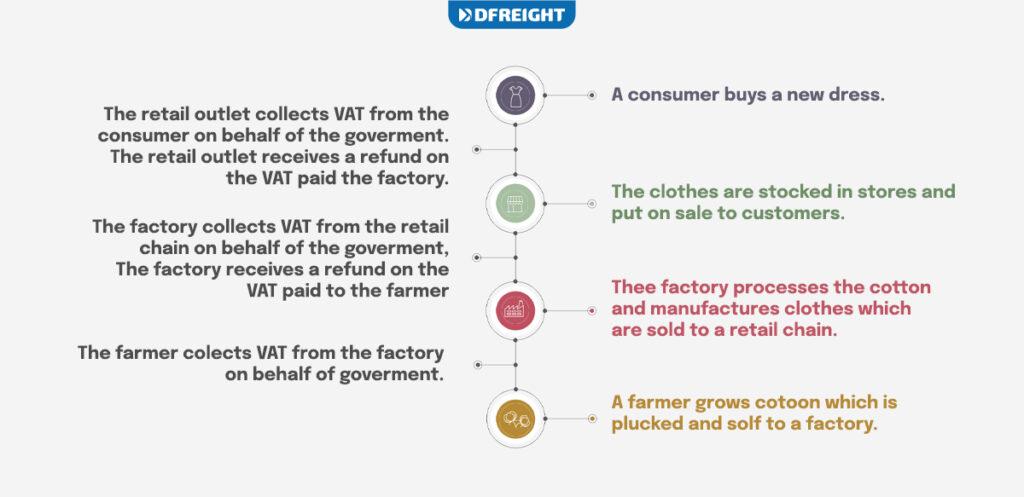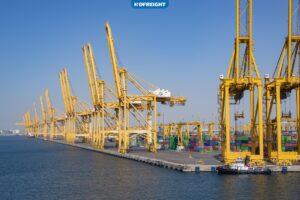VAT payment is one of the sub-categories and different types of taxes. VAT stands for Value Added Tax, a tax the government charges at each stage of production and distribution. If you buy something, for example, it will have been taxed at every step from the time it was grown or manufactured until it enters your hands. We’ll go through the sorts of taxes, their benefits and drawbacks, and the UAE’s tax payment legislation in the following sections. Learn what includes paying taxes, how to pay your taxes, and how to calculate taxes.
Table of Contents
Taxes; Economic and Social Development
Taxes are one of the most important aspects of any society. They provide the government with the revenue needed to fund public services, infrastructure, and other vital programs. Without taxes, governments would be unable to function correctly, and society would suffer. There are many different types of taxes, and each one plays a vital role in financing the government. The most common type of tax is income tax, which individuals and businesses pay. Other types of taxes include property, sales, excise, and VAT.
Each type of tax has its purpose and benefits. The income tax is the government’s primary revenue source and funds various programs and services. Property taxes help to support schools and other public services, while sales taxes help to finance the construction and maintenance of roads and bridges. Excise taxes are used to fund specific programs, such as environmental protection. Taxes are necessary to fund the government and maintain a functioning society. Without taxes, the government would be unable to provide the services that we rely on, and our quality of life would suffer.
VAT is a value-added tax imposed on most goods and services sold. The purpose of this tax is to raise revenue for the government. It is also used to encourage businesses to sell more products and to promote exports. There is a close relationship between taxes and economic and social development. Most developed countries have high taxes, which provide the government with the revenue needed to provide social services and invest in infrastructure. These investments are essential for economic growth and improving the standard of living. In addition, high taxes can help reduce inequality by redistributing income from the rich to the poor. Paying taxes could help enhance your life experience by:
- Increase security
- Education
- Health
- Infrastructure
- Hardware and software activities
- And other welfare items in the country
Economic growth is a numerical increase in the production of goods and services over time, measured by gross national product, which is the sum of the final value of products and services over a one-year fiscal period. Taxes and their collection play a critical role in economic growth and other factors. Governments help a country flourish economically by collecting taxes and sharing the proceeds equally among the citizens. So far, we’ve seen how important it is to pay taxes. Now we’ll take a look at some of the other aspects.
The Basic Types of Taxes
Different countries have different laws and different forms of taxes, but income, consumption, and property taxes are the three primary categories of taxes. Income taxes are levied on the earnings of individuals and businesses. Consumption taxes are set on the purchase of goods and services. Property taxes are levied on the value of land and buildings. In most developed countries, income taxes are the most critical source of government revenue, with consumption taxes coming in second and property taxes coming in third.
In a broader sense, taxes are separated into two categories: direct and indirect. The definitions of each and their distinctions can be found in the quote below from the Value Added Tax book.
A direct tax is one that is assessed upon the property, business or income
Value Added Tax
of the individual who is to pay the tax. Conversely indirect taxes are taxes
that are levied upon commodities before they reach the consumer who
ultimately pay[s] the taxes as part of the market price of the commodity.
The sorts of taxes are organized clearly and concisely in the infographic below:

The UAE Tax System
The United Arab Emirates (UAE) has a value-added tax system designed to tax the country’s consumption of goods and services. The standard rate of this tax in the UAE is 5%, and certain items such as food and healthcare are exempt from VAT. Businesses in the UAE must register for VAT if their taxable supplies exceed AED 375,000 in 12 months. It is charged on the supply of goods and services in the UAE and levied at each supply chain stage. The supplier is responsible for charging tax on their supplies and must collect the tax from the customer and remit it to the Federal Tax Authority (FTA).
VAT is also charged on imports into the UAE and the supply of goods and services exported from the UAE. The UAE has a VAT refund scheme for tourists, which allows them to pay back the tax on goods purchased in the UAE. To be eligible for a refund, tourists must spend a minimum of AED 250 on goods in a single transaction and present their passport and original purchase receipts when claiming a refund.
The United Arab Emirates started charging value-added tax on goods and services within the UAE and imports into the country on January 1, 2018, which the FTA announced. The UAE was the first country in the GCC (Gulf Cooperation Council) to implement this tax, but now they have a Common VAT Agreement of the States of the Gulf Cooperation Council that, for further information, you can find below:
The UAE may opt to implement a VAT for a variety of reasons:
- For the first time in its oil-dependent history, the UAE is attempting to minimize its reliance on oil earnings. With oil income accounting for over 90% of its GDP, this country has to diversify its revenue streams as the global economy grows more diversified and oil prices continue to fall.
- The UAE’s second reason is that it is attempting to boost its tax collection rate and reduce tax evasion. The UAE has a tax collection rate of roughly 50%, lower than the 70-80% range, which is generally considered ideal.
- The UAE is also attempting to lessen its reliance on foreign employees for the third reason. The UAE has a high rate of international workers, steadily expanding in recent years.
- The UAE is attempting to lessen its reliance on remittances for the fourth reason. The UAE receives a large number of remittances from its nationals, which is growing year after year.
The UAE tax system is a favorable tax regime for foreign investors: The UAE offers several tax incentives for foreign investors, including a corporate tax holiday for the first three years of operation, exemption from customs duties, and several other investment-friendly measures. The UAE also has a well-developed infrastructure, including a modern and efficient transportation network, world-class telecommunications, and many free zones maintained and developed by paying taxes.
VAT Payment
The VAT payment was first introduced in France in 1954, and most European countries have adopted it. This tax payment is now the primary source of revenue for the EU and other developed countries, such as the UAE.
VAT is a consumption tax, which the final consumer ultimately bears. However, businesses must collect VAT on the government’s behalf and remit it to the government. This means that companies act as tax collectors for the government. The tax system is designed to be self-policing. This means businesses are responsible for ensuring that the correct amount of tax is charged on their supplies and for remitting the proper VAT to the government. This system is designed to be simple and efficient.
VAT payment is a sub-category of indirect taxes; it applies equally to tax-registered businesses managed on the UAE mainland and in the free zones. The transfer of goods between designated zones is tax-free. Most food items, medicines, and medical equipment are VAT-free in the UAE. Other items that may be exempt from payment include educational materials, individual charitable donations, and exports.
The following businesses are sectors that include VAT payment:
- Businesses that sell goods or services to customers in the UAE.
- Businesses that are registered with the UAE authorities.
- Businesses that have a physical presence in the UAE.
- Businesses that are registered with the UAE Chamber of Commerce and Industry.
- Businesses are required to pay this tax by law.
- Businesses that have been identified explicitly by the UAE authorities as being liable for VAT.
- Businesses that are registered with the UAE Free Zone Authority.
- Businesses must pay VAT under the terms of their lease agreement.
- Businesses that are registered with the Dubai International Financial Centre.
- Businesses must pay VAT under the terms of their trade license.
If a business is not registered for VAT, it cannot charge VAT payment on the supplies of goods and services they make. This means that the cost of the goods or services they sell will be lower than those of businesses that are registered for VAT.
The picture below depicts the taxes paid in each step, from cotton harvesting to clothes creation. The procedure for computing the VAT payment at each stage and the amount due for each portion are depicted in the infographic below.

| Sales | VAT 5% Charged on Sales | VAT Recovered on Purchases | Net VAT Payable | |
| Farmer | AED 1000 | AED 50 | AED 0 | AED 100 |
| Factory | AED 3000 | AED 150 | AED 50 | AED 100 |
| Retailer | AED 5000 | AED 250 | AED 150 | AED 100 |
| Total VAT paid by the final consumer | AED 200 |
Where Can I Pay My Value Added Tax in the UAE?
Businesses can register for VAT tax through the e-services section on the FTA website. Channels for paying due tax:
- Credit cards
- Debit cards
- Bank transfer
VAT Payment on Export/Import in UAE
Export/Import of goods and services is a significant source of revenue for the UAE government. As a result, businesses must be aware of the tax implications of exporting and importing goods and services. Generally, in the UAE, inbound and outbound transportation is zero-rated, while the transport of goods locally is subject to VAT at 5%. When exporting goods and services, exporters in the UAE are exempt from paying VAT on exports. The business must pay the applicable customs duty when importing goods and services. The responsibility is then deducted from the value of the imported goods and services, and the amount remaining is the VAT payment.
Businesses should consider the tax implications of exporting and importing goods and services. They should contact their accountant or tax advisor if they are unsure about tax implications.
How to Calculate VAT Payment in the UAE?
To calculate VAT payment in the UAE, you first need to know the value of the purchased goods or services. This can be either a specific price or the cost of materials used; then, you calculate 5% of that value. This topic is explained in detail with an example in the video below. Many websites also calculate your VAT payment online and instantly, use the value and get your vat calculation.
Conclusion
Taxes help reduce the government deficit, leading to less debt and a more robust economy, ultimately benefiting the community. Keeping track of all the details in calculating VAT in the UAE is vital. Doing so will ensure that you are fully aware of your obligations and get the most accurate tax calculation possible. Finally, be mindful of tax evasion and its examples.
DFreight is here to assist you at all stages of transportation and shipping cargo, ensuring you have a positive experience. If you require any additional information, don’t hesitate to get in touch with our specialists.
What is the VAT percentage in UAE?
The VAT rate percentage in the UAE is currently 5%.
What are the types of VAT in the UAE?
There are two types of VAT rates in the UAE, which include 5% and the rate of 0%.
What exactly is the VAT formula?
(VAT= Output Tax – Input Tax) is the formula for calculating VAT.














